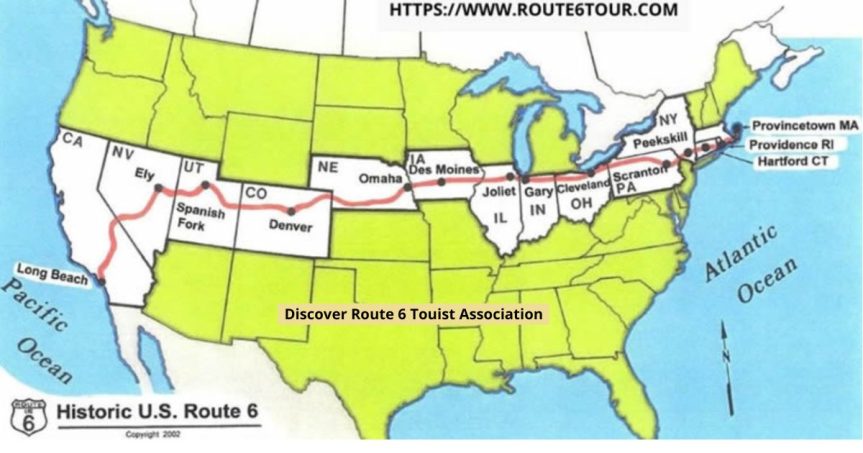Discovering Hobart, Indiana in November: A Hidden Gem for Travelers
Nestled in northwest Indiana, Hobart is a charming city that often flies under the radar of mainstream travel guides. Its quiet allure, rich history, and vibrant community make it a captivating destination, especially in November. Whether you’re a travel enthusiast seeking new adventures, a local explorer interested in nearby gems, or a history buff eager to uncover stories of the past, Hobart offers something special for everyone.
Unveiling Hobart, Indiana’s Unique Charm
Hobart exudes a quaint charm that captures the hearts of its visitors. This city, with its lush parks, scenic lakes, and historic architecture, provides a serene escape from the hustle and bustle of larger urban centers. The community’s warmth is reflected in its friendly locals, who take pride in preserving Hobart’s rich heritage and welcoming spirit.
With a population of just over 29,000, Hobart is large enough to offer various amenities and attractions yet small enough to maintain an intimate, small-town feel. Walking through its inviting streets, you’ll find a harmonious blend of old-world charm and modern conveniences, making it a perfect getaway for those looking to recharge and explore.
The city’s location is another draw—situated just 40 miles from Chicago, Hobart is easily accessible for weekend getaways or extended stays. Its proximity to Lake Michigan adds another layer of appeal, offering plenty of opportunities for boating, fishing, and enjoying waterfront views.
Hobart in November: A Unique Experience
November in Hobart is a time of transformation, as the city embraces the crispness of fall and the anticipation of winter. The weather is cool and refreshing, with average temperatures ranging from 35°F to 50°F, making it ideal for outdoor exploration. The fall foliage lingers, painting the landscape in warm hues of red, orange, and gold—a perfect backdrop for leisurely strolls and photo opportunities.
This month, Hobart hosts several events that showcase its community spirit and cultural richness. The annual Harvest Festival is a highlight, offering local produce, crafts, and family-friendly activities. It’s a fantastic opportunity to sample regional flavors and engage with the community.
November also marks the beginning of holiday celebrations in Hobart. The city lights up with festive decorations, and local businesses get into the spirit with special promotions and extended hours. Visitors can enjoy the holiday cheer and start their gift shopping early at the charming boutiques and stores dotting the downtown area.
Top Attractions and Activities in November
Hobart’s attractions are as diverse as they are engaging. Start your adventure at Lake George, a centerpiece of the city offering stunning views and recreational activities. In November, the lake is a tranquil spot for birdwatching or a brisk walk along the shoreline paths.
For nature lovers, the Deep River County Park is a must-visit. This expansive park features walking trails, picnic areas, and historical sites, including a grist mill dating back to the 1800s. The park’s serene environment is perfect for unwinding and enjoying the natural beauty of Indiana’s landscape.
History enthusiasts will appreciate the Hobart Historical Society Museum, which houses a collection of artifacts and exhibits detailing the city’s past. Learn about Hobart’s founding, its role in regional development, and the stories of the people who shaped its community.
Exploring Hobart’s Historical and Cultural Roots
Hobart’s history is a tapestry of industrial growth, cultural development, and community resilience. Founded in the mid-19th century, the city grew rapidly with the advent of the railroad, becoming a hub for trade and industry. Today, remnants of its industrial past are visible in the preserved architecture and historical landmarks scattered throughout the city.
Culturally, Hobart has a vibrant arts scene, with local galleries and studios showcasing the works of regional artists. The community supports various cultural events, including art fairs, live performances, and workshops, reflecting the residents’ appreciation for creativity and expression.
The city also celebrates its diverse heritage through festivals and public events, bringing together people of different backgrounds to share their traditions and stories. This cultural richness adds depth to Hobart’s identity, offering visitors a chance to experience the city’s unique character firsthand.
Insider Tips for Your Hobart Adventure
To make the most of your November visit to Hobart, consider these insider tips:
- Dress Appropriately: November weather can be unpredictable, so layering is key. Pack warm clothing, including hats and gloves, to stay comfortable during outdoor activities.
- Plan Your Itinerary: With so much to see and do, it’s helpful to plan your itinerary in advance. Prioritize your top attractions but leave room for spontaneous discoveries—some of the best experiences come from unplanned adventures.
- Engage with Locals: Hobart’s residents are known for their friendliness and hospitality. Strike up conversations with locals to gain insights into the best places to eat, shop, and explore. Their recommendations can lead you to hidden gems not found in travel guides.
Why Hobart Should Be on Your November Travel List
Hobart, Indiana, offers a delightful mix of natural beauty, historical intrigue, and community warmth, making it a standout destination for November travel. Its serene environment and welcoming atmosphere provide the perfect setting for relaxation and exploration. Whether you’re drawn to its picturesque landscapes, rich history, or vibrant community events, Hobart promises an enriching experience that leaves a lasting impression.
Share Your Hobart Journey
We hope this guide has inspired you to consider Hobart for your next travel adventure. If you visit, we’d love to hear about your experiences and highlights. Share your stories and photos on social media using #HobartIndiana, and join our community of explorers who have fallen in love with this charming city.
Looking for more travel inspiration? Subscribe to our newsletter for updates on hidden gems, travel tips, and exclusive offers to enhance your journeys. Happy travels!



